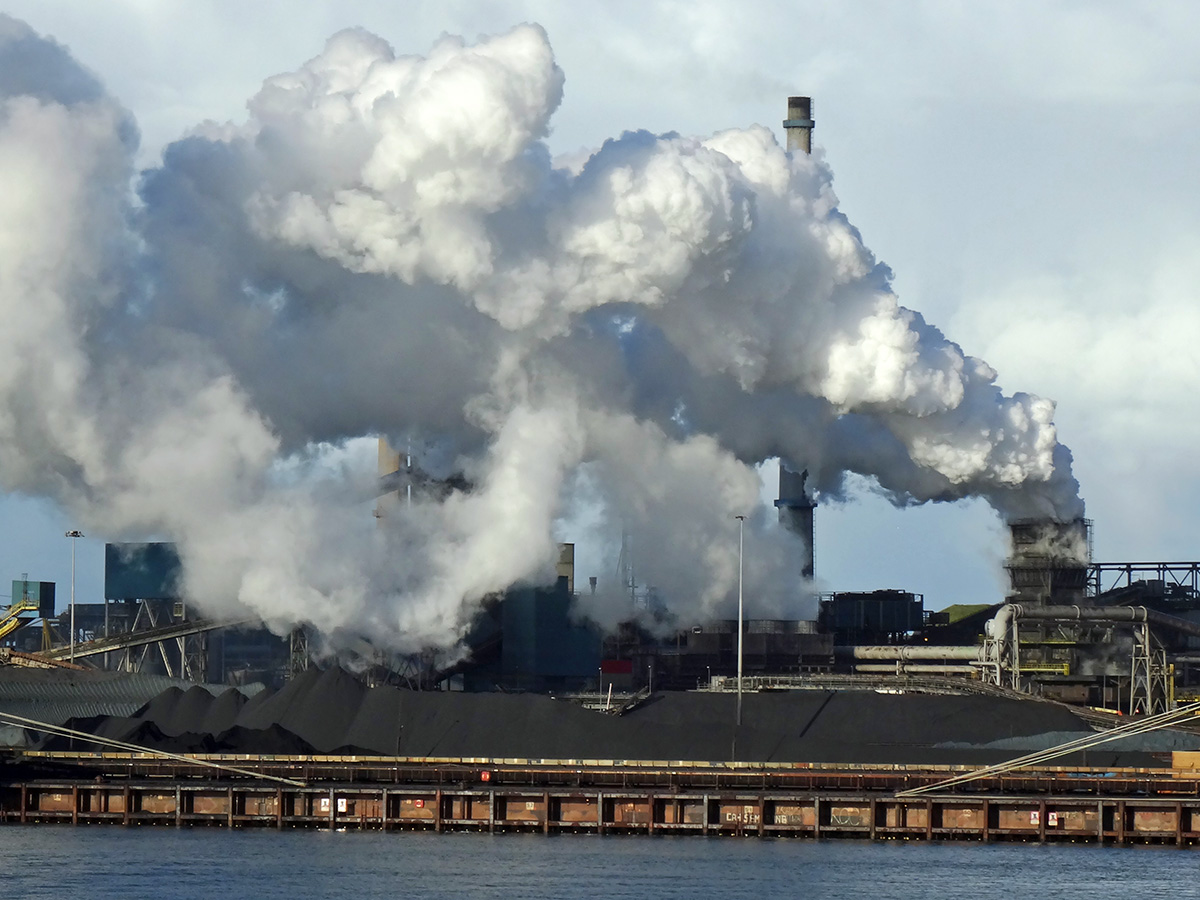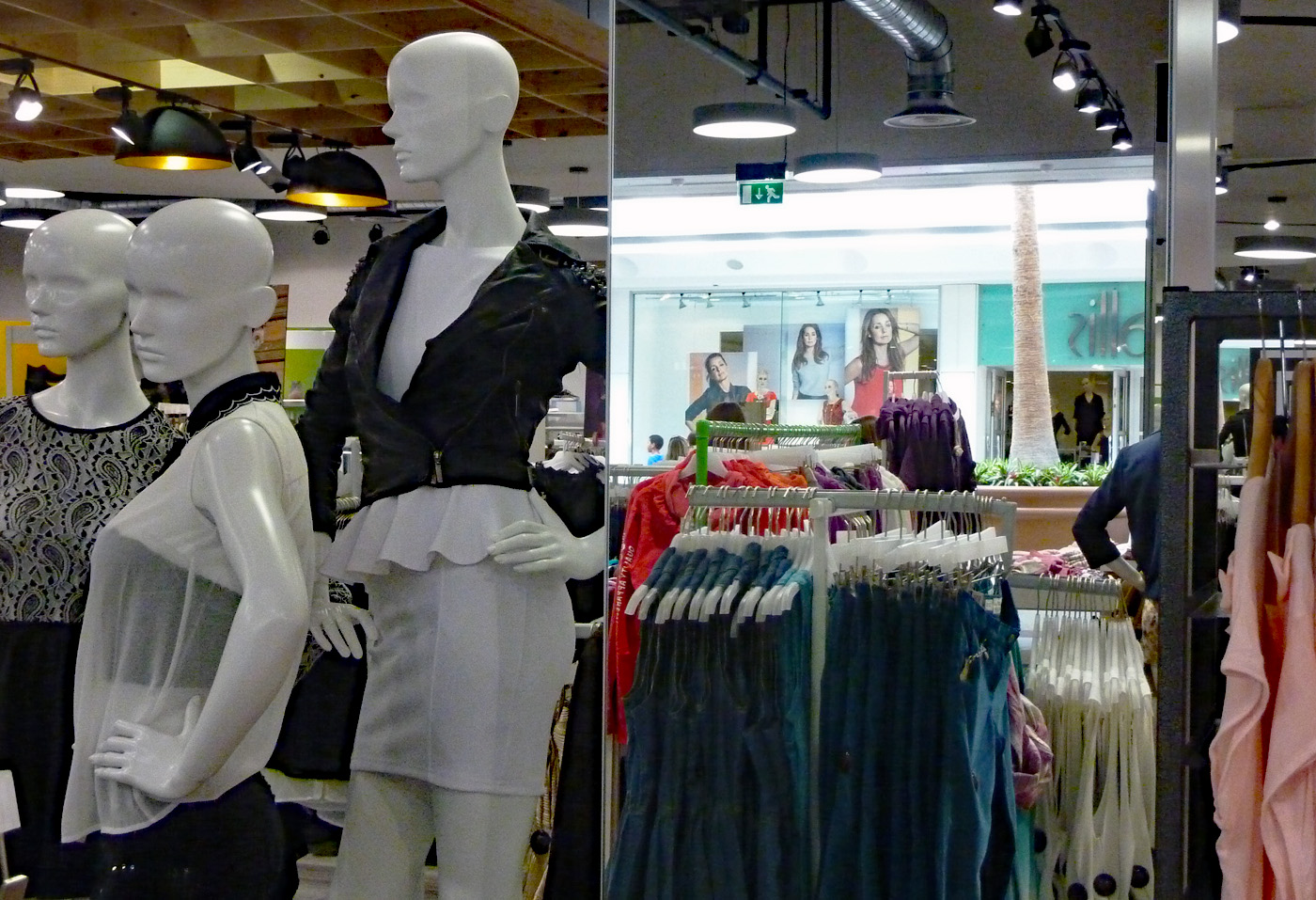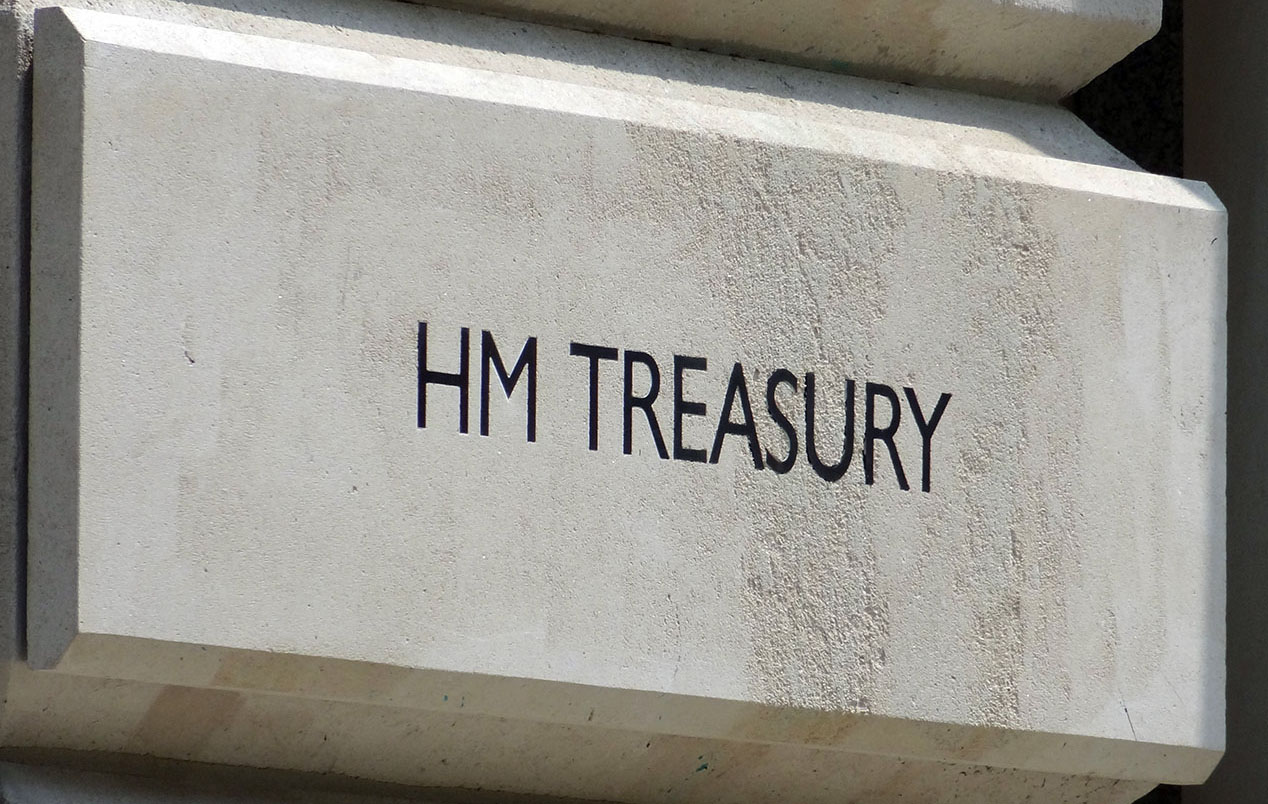 Imagine a situation where you are thinking of buying a good and so you go to an e-commerce marketplace such as Amazon, eBay, Etsy or Onbuy. How confident are you about the quality of the different brands/makes that are listed for sale on these digital platforms? How do you choose which product to buy? Is the decision strongly influenced by customer reviews and rating?
Imagine a situation where you are thinking of buying a good and so you go to an e-commerce marketplace such as Amazon, eBay, Etsy or Onbuy. How confident are you about the quality of the different brands/makes that are listed for sale on these digital platforms? How do you choose which product to buy? Is the decision strongly influenced by customer reviews and rating?
When a customer is choosing what to buy it raises an interesting question: to what extent can the true quality of the different goods/services be observed at the time of purchase? Although perfect observability is highly unlikely, the level of consumer information about a product’s true quality will vary between different types of transaction.
For example, when consumers can physically inspect and test/try a product in a shop, it can help them to make more accurate judgements about its quality and condition. This poses a problem for online sellers of high-quality versions of a good. Without the ability to inspect the item physically, consumers may be unsure about its characteristics. They may worry that the online description provided by the seller deliberately misrepresents the true quality of the item.
Consumers may have other concerns about the general reliability of online sellers. For example, in comparison to buying the product from a physical store, consumers may worry that:
- They will have to wait longer to receive the good. In many cases, when consumers purchase a product from a high-street store, they can walk away with the item and start using it straight away. When purchasing on line, they may end up waiting weeks or even longer before the product is finally delivered.
- It will be more difficult to return the product and get a refund.
- They are more likely to come across fraudulent sellers who have set-up a fake website.
This greater level of uncertainty about the true characteristics of the product and the general reliability of the seller will have a negative impact on consumers’ willingness to pay for all goods. This impact is likely to be particularly strong for high-quality versions of a product. If consumers’ willingness to pay falls below the reservation price of many sellers of high-quality goods, then the market could suffer from adverse selection and market failure.
Are there any within-market arrangements that could help deal with this issue? One possibility is for sellers to signal the quality of their products by posting consumer ratings and reviews. If consumers see that a product has many positive ratings, then this will increase their confidence in the quality of the product and so increase their willingness to pay. This could then reduce both levels of asymmetric information and the chances of adverse selection occurring in the market,
There is survey evidence that many people do read consumer reviews when choosing products on line and are heavily influenced by the ratings.
The problem of fake reviews
 However, when consumers look at these reviews can they be sure that they reflect consumers’ honest opinions and/or actual experience of using the good or service? Firms may have an incentive to manipulate and post fake reviews. For example, they could:
However, when consumers look at these reviews can they be sure that they reflect consumers’ honest opinions and/or actual experience of using the good or service? Firms may have an incentive to manipulate and post fake reviews. For example, they could:
- Deliberately fail to display negative reviews on their website while claiming that all reviews are published.
- Use internet bots to post thousands of automated reviews.
- Take positive reviews from competitors’ websites and post them on their own website.
- Pay some customers and/or employees to write and post 5-star reviews on their own website.
- Pay some customers and/or employees to write and post 1-star reviews on their competitors’ websites.
- Set up a website that they claim is independent and use it to provide positive endorsements of their own products.
If the benefits of this type of behaviour outweigh the costs, then we would expect to see fake reviews posted on websites. If their use becomes widespread, then the value of posting genuine reviews will fall. The market may then settle into what economists call a ‘pooling equilibrium’.
What evidence do we have on the posting of fake reviews? Given their nature, it is difficult to collect reliable data and there are large variations in the reported figures. One recent study found evidence of fake reviews being purchased and posted for approximately 1500 products on Amazon.
Can consumers screen reviews and identify those that are more likely to be fake? The following are some tell-tale signs.
- Products that receive a large number of very positive reviews over a short period (i.e. a few days). There are then long periods before the product receives another large number of positive reviews.
- A high percentage of 5-star reviews. Two, three and four start reviews are more likely to be genuine.
- Reviews that specifically mention a rival firm’s products.
- Reviewers who have given very high ratings to large number of different products over a short period of time.
- Reviews that include photos/videos.
Competition authorities around the world have been investigating the issue and the Competition and Markets Authority has announced plans to introduce new laws that make the purchasing and posting of fake reviews illegal.
Articles
Questions
- Outline different types of asymmetric information and explain the difference between adverse selection and moral hazard.
- Using a diagram, explain the impact of uncertainty over the quality of a good on consumers’ willingness to pay.
- Will consumers always face greater uncertainty over quality when purchasing goods on line rather than visiting the high street? Discuss your answer making reference to some specific examples.
- Using diagrams, explain how a market for high-quality versions of a good might collapse if there is asymmetric information. Using price elasticity of supply, explain the circumstances when the market is more likely to collapse.
- Discuss some of the benefits and costs for a firm of purchasing and posting fake reviews.
 Many economists argue that the most effective policy for dealing with climate change is carbon pricing. This reduces greenhouse gas (GHG) emissions in a way that minimises the costs to the economy.
Many economists argue that the most effective policy for dealing with climate change is carbon pricing. This reduces greenhouse gas (GHG) emissions in a way that minimises the costs to the economy.
For the policy to work effectively it is important that the price per tonne of CO2 equivalent (CO2e) does not vary with the activity that causes the emissions. In other words, whether you drive a car, heat your house using gas or travel by air, the GHGs you create need to be priced at a unified rate.
Governments can introduce carbon pricing in two different ways – cap-and-trade schemes and carbon taxes.
With a cap-and-trade policy, emission allowances are either issued or sold to the organisations covered by the scheme. They must accumulate enough of these allowances to match the actual level of emissions they produce or pay a large fine. After the initial allocation, allowances can be bought and sold in a secondary market and prices can be quite volatile.
With a carbon tax, the government directly sets the price of GHGs through the tax rate but has less control over the quantity of emissions.
Policy in the UK
 The UK Emissions Trading Scheme – an example of a cap-and-trade scheme – clearly places a price on GHG emissions. As this price is determined by market forces it can vary on a daily basis. The scheme applies to electricity generation and other energy-intensive industries that account for approximately 30 per cent of all emissions.
The UK Emissions Trading Scheme – an example of a cap-and-trade scheme – clearly places a price on GHG emissions. As this price is determined by market forces it can vary on a daily basis. The scheme applies to electricity generation and other energy-intensive industries that account for approximately 30 per cent of all emissions.
Although the UK does not have a specific carbon tax, it does have a number of different taxes that have an impact on the environment. Some of these have stated environmental objectives (e.g. the Climate Change Levy) while the main rationale for others is to raise revenue (fuel duty).
The tax rates are typically set on the output or consumption of the good rather than on emissions. For example, the Climate Change Levy applies to businesses’ use of electricity, gas and coal rather than the emissions the energy generates. Fuel duty depends on the amount of petrol consumed rather than the emissions the burning of that fuel generates. Clearly, emissions will tend to rise in proportion to the consumption/production of the good, but the relationship will not be precise.
The structure of VAT also influences emissions. The standard rate of VAT in the UK is 20 per cent. However, a lower level is applied to some goods/services that produce significant emissions. For example, the rate on household consumption of gas is 5 per cent while commercial passenger flights are zero rated. These lower tax rates are an implicit subsidy for the people who consume these goods/services. It makes them cheaper relative to the price of other goods.
Impact of the policies
Researchers from the Institute for Fiscal Studies have recently tried to analyse the impact of this complex range of policies on the price of carbon. The results indicate wide variations depending on the activity that causes the emissions.
One of the most significant differences is between gas and electricity. For example, non-energy-intensive businesses pay a price of £229.10 per tonne of CO2e from electricity generation but only £30.50 per tonne from burning gas. The response to the incentives this creates is unsurprising. One of the biggest contributing factors to the fall in territorial emissions in the UK has come from the decarbonisation of electricity supply: i.e. the switch away from coal-fired generation.
 The impact of government policy on UK households creates quite perverse incentives. Because of the lower rates of VAT, families receive an implicit subsidy of £24 per tonne CO2e when they use gas to heat their homes. When they use electricity, the source of energy that generates less emissions, they face a positive price of £137 per tonne of CO2e. Once again, the response to these incentives is unsurprising. Household emissions only fell by a relatively small amount between 1990 and 2018 because of the continued use of gas for heating and cooking.
The impact of government policy on UK households creates quite perverse incentives. Because of the lower rates of VAT, families receive an implicit subsidy of £24 per tonne CO2e when they use gas to heat their homes. When they use electricity, the source of energy that generates less emissions, they face a positive price of £137 per tonne of CO2e. Once again, the response to these incentives is unsurprising. Household emissions only fell by a relatively small amount between 1990 and 2018 because of the continued use of gas for heating and cooking.
Unsurprisingly many commentators have referred to carbon pricing in the UK as a confusing mess and have called for a unified rate across all activities to minimise the costs to the economy. Another important issue is the level at which a new unified rate is set. Some research by the Department for Business, Energy and Industrial Strategy suggests that the figure would have to be set between £122 and £36 per tonne of CO2e in order for the UK to reach its target of net zero emissions by 2050.
A higher unified rate would also create another problem – the distributional impact. Poorer households spend a much greater share of their income on electricity, heating and food and so would be disproportionately affected by the policy. For the policy to be politically acceptable, the government will need to find an effective way to compensate these groups.
Articles
Report
Questions
- Outline the difference between territorial and consumption emissions.
- Using the concepts of rivalry and excludability, explain why GHGs and the climate change they cause are an example of market failure.
- Discuss the main differences between cap-and trade schemes and carbon emission taxes.
- Explain why a unified carbon price would minimise the costs to the economy of reducing the level of GHG emissions.
- Discuss some of the potential limitations of introducing carbon pricing and explain why some countries are considering the implementation of a Carbon Border Adjustment mechanism.
 For many goods and services, economists argue that relatively unregulated markets often do a pretty good job in delivering desirable outcomes from society’s view point.
For many goods and services, economists argue that relatively unregulated markets often do a pretty good job in delivering desirable outcomes from society’s view point.
However, for these desirable outcomes to occur, certain conditions need to be present. One of these is that all the benefits and costs of consuming and producing the good/service must be experienced/incurred by the buyers and sellers directly involved in the transaction: i.e. there are no externalities. The market can still work effectively if people outside of the transaction are affected (i.e. third parties) but the impact occurs through the price mechanism.
The fast fashion industry
Fast fashion refers to designs and trends that rapidly pass from catwalks and designers to retailers. The clothes sell for low prices and in high quantities. The business model relies on regular purchases and impulse buying. It is particularly popular in the UK where annual clothing consumption per capita is significantly greater than in other European countries – 26.7kg vs 16.7kg in Germany and 14.5kg in Italy. On average, people in the UK have 115 items of clothing. Unsurprisingly, 30 per cent of these garments have not been worn for at least 12 months.
Externalities in fast fashion
There is lots of evidence that the fast fashion market fails to meet the condition of no externalities. Instead, it generates lots of external costs across its whole supply chain that do not affect third parties through the price mechanism. For example:

- Growing cotton requires large amounts of water. Some estimates suggest that on average it takes 10 000 litres of water to cultivate just one kilogram of cotton. As water is a common resource (rival and non-excludable), its use in cotton production can exceed socially desirable levels. This can have serious consequences for both the quantity of drinking and ground water and can lead to previously fertile land being transformed into arid regions that are too dry to support vegetation.
- Growing cotton also uses large amounts of pesticide. Some estimates suggest that 6 per cent of global pesticide production is applied to cotton crops. Extended contact with these chemicals can cause illness and infertility. It also has a negative impact on the long-term productivity of the soil. For example, the chemicals destroy microorganisms, plants and insects and so decrease biodiversity.
- The manufacture of synthetic fibres such as polyester has a smaller negative impact on the use of water and land than the cultivation of a natural fibre such as cotton. However, because it is derived from oil, its manufacture generates more CO2 emissions. One study compared the CO2 emissions from producing the same shirt using polyester and cotton. The former generated 5.5kg whereas the latter produced 2.1kg.
- The waste water from the use of solvents, bleaches and synthetic dyes in the manufacture of textiles/garments often flows untreated into local rivers and water systems. This is especially the case in developing countries. Estimates suggest that this is responsible for between 17 and 20 per cent of industrial global water pollution.
- There are excessive levels of textile waste. This can be split into producer waste and consumer waste. Producer waste consists of 10–15 per cent of the fabric used in the manufacture of garments that ends up on the cutting room floor. It also includes deadstock – unsold and returned garments. For example, Burberry admitted that in 2017 it incinerated £28.6 million of unsold stock. In the same year, UK consumers disposed of 530 000 tonnes of unwanted clothing, shoes, bags and belts. This all went for landfill and incineration.
- Textiles are one of the major sources of microplastic pollution and contribute 35 per cent (190 000 tonnes) of microplastic pollution in the oceans. A 6kg domestic wash can release as many as 700 000 synthetic fibres.
Addressing the externalities
The House of Commons Environmental Audit Committee published a report on the fashion industry in February 2019. One of its key recommendations was that the tax system should be reformed so that it rewards fashion companies that design products with lower environmental impacts.
The UK government has tended to focus on the use of plastic rather than textiles. For example, it introduced a charge for single use carrier bags as well as banning the use of microbeads in rinse-off personal products and plastic straws/stirrers.
In April 2022, a new tax is being introduced in the UK on the plastic packaging of finished goods that is either manufactured in the UK or imported from abroad. The rate, set at £200 per metric tonne, will apply to packaging that contains less than 30 per cent of recycled plastic.
 One specific proposal made by the Environmental Audit Committee was for the government to consider extending this new tax to textiles that contain less than 50 per cent recycled polyester. A recent study found that just under 50 per cent of clothes for sale on leading online websites were made entirely from new plastics.
One specific proposal made by the Environmental Audit Committee was for the government to consider extending this new tax to textiles that contain less than 50 per cent recycled polyester. A recent study found that just under 50 per cent of clothes for sale on leading online websites were made entirely from new plastics.
The committee also called for the introduction of an extended producer responsibility scheme. This would make textile businesses responsible for the environmental impact of their products: i.e. they would have to contribute towards the cost of collecting, moving, recycling and disposing of their garments. It could involve the payment of an up-front fee, the size of which would depend on the environmental impact of the product.
In its Waste Prevention Programme for England published in March 2021, the government announced plans to consult with stakeholders about the possibility of introducing an ‘extended producer responsibility scheme’ in the textile industry. The House of Commons Environmental Audit Committee is also carrying out a follow-up inquiry to its 2019 report.
Articles
Government and Parliament documents and reports
Questions
- Using the concepts of rivalry and excludability, define the concept of a common resource.
- Explain the ‘tragedy of the commons’ and how it might apply to the use of water in the cultivation of cotton.
- Draw a diagram to illustrate how negative externalities in consumption and production lead to inefficient levels of output in an unregulated competitive market.
- Using a diagram, explain how imposing a tax on producers of textile products that contain less than 50 per cent recycled polyester could reduce economic inefficiency.
- Explain the potential limitations of using taxation/regulation to address the pollution issues created by the fast fashion sector.
 Many of you may have heard of nudge – the idea that governments can help people make better decisions by carefully designing the way a policy is structured and presented. Have you heard of sludge?
Many of you may have heard of nudge – the idea that governments can help people make better decisions by carefully designing the way a policy is structured and presented. Have you heard of sludge?
The most widely cited example of a nudge is changing a default option. The default option is what happens if you do nothing. For example, when you start a new job, are you automatically enrolled into the pension scheme or do you have to do something (i.e. fill-in an on-line form) to opt-in to the scheme. Changing the default option to one of being automatically enrolled in a scheme seems to have a big impact on the choices people make.
Recently, policy makers have started referring to ‘sludge’. Sludge is the opposite of nudge: i.e. characteristics about design and presentation that make it more difficult for people to make good decisions. Some businesses may use sludge to encourage consumers to spend more on their goods than they ever intended.
One interesting application of sludge is in the design of websites – referred to as Dark Patterns. The following are a number of different categories of dark pattern:
The last example, Forced Continuity, refers to the use of free trial periods and automatic renewal of contracts. Many people sign up for a free trial or special offer with the full intention of cancelling before the account automatically switches to the standard price.
 How often do people simply forget or never quite get around to cancelling these deals when the time comes? Some recent evidence comes from a YouGov Survey. Forty-seven percent of respondents to this survey reported having accidently signed up for an annual subscription because they either forgot or were unable to cancel their account. The estimated total cost of unwanted subscriptions per year was £837 million. The same YouGov survey found that one in eight people kept paying for over four months before finally getting around to cancelling.
How often do people simply forget or never quite get around to cancelling these deals when the time comes? Some recent evidence comes from a YouGov Survey. Forty-seven percent of respondents to this survey reported having accidently signed up for an annual subscription because they either forgot or were unable to cancel their account. The estimated total cost of unwanted subscriptions per year was £837 million. The same YouGov survey found that one in eight people kept paying for over four months before finally getting around to cancelling.
One business has recently seen an opportunity to help people deal with this problem. Free Trial Surfing is a new App developed by the company, Do Not Pay. It became available via Apple’s App store in September but is not yet compatible with Android devices. It works in the following way.
When customers download the app, they receive a new credit card number and a false name. Although Do Not Pay register the card details to their own business, the customer can use the information to sign up for a free trial of a good or service. In effect, Do Not Pay acts as an intermediary between the firm offering the promotion and the user. Once the free trial period ends, the app automatically cancels the subscription. Importantly, the new credit card details only work when someone signs up for a free trial. Consumers cannot use it to purchase any other products. Obviously one major drawback to the app is that a consumer would have to sign up again with their own personal credit card if they wanted to continue to use the service after the free trial ends. Businesses may also try to block the use of Do Not Pay credit card numbers for their services.
It will be interesting to see if other businesses come up with interesting ways of helping us to deal with sludge.
Articles
Questions
- Give three different examples of nudges.
- What policies do government typically use to change peoples’ behaviour? How do these traditional approaches differ from nudge?
- Identify some biases from behavioural economics that might help to explain why so many people fail to cancel subscriptions once a free trial period ends.
- Choose two other types of dark pattern and explain how they might prevent people from making decisions that maximise their own welfare.
 When making a decision, what happens if you do nothing: i.e. take no action? The answer is the default option. There is evidence that changing the default option for the same decision can sometimes have a big impact on the final choices people make. For example, when a person starts a new job, they often have to decide whether to contribute to the company’s pension scheme. The default option is typically for employees not to contribute. They have to do something actively (e.g. fill in an online form) to opt in to the scheme. An alternative is to change the default option so that employees are contributing to the pension. They now have to do something to opt out of the scheme.
When making a decision, what happens if you do nothing: i.e. take no action? The answer is the default option. There is evidence that changing the default option for the same decision can sometimes have a big impact on the final choices people make. For example, when a person starts a new job, they often have to decide whether to contribute to the company’s pension scheme. The default option is typically for employees not to contribute. They have to do something actively (e.g. fill in an online form) to opt in to the scheme. An alternative is to change the default option so that employees are contributing to the pension. They now have to do something to opt out of the scheme.
Changing the default should have no impact on people who behave in ways that are consistent with the rational choice model in economics. However, research by Madrian and Shea (2001) found that it had a big effect. When employees had to opt-in, 49 per cent enrolled in a company pension. When they had to opt out, the figure increased to 86 per cent.
Other research suggests that defaults can influence the likelihood of getting a flu jab, making healthier food choices, receiving e-mail marketing and choosing certain types of car insurance.
Organ donation
One policy area where the choice of default has become a topical issue is organ donation. In 2017, over 400 people died in the UK because it was impossible to find an appropriate donor. Could changing the default increase the number of donors?
The scheme that operates in England requires people to sign-up to the organ donor register: i.e. they have to opt in. Although 80 per cent of the public support organ donation less than 50 per cent ever get around to signing this register.
Parliament recently approved the Organ Donation Bill and the new law will come into effect in 2020. The default position will change so that people are automatically signed-up for organ donation. If they do not want to donate their organs, they will have to opt out of the register.
In December 2015, the devolved Welsh government introduced a similar scheme. Although it is quite early to give a full assessment of the policy, its impact has been smaller than many people had hoped.
Why have the initial results been disappointing? One potential downside with an opt-out scheme is that it may create greater uncertainty about someone’s true wishes. With an opt-in scheme, a relative takes a deliberate action to indicate their preference to be an organ donor. In England, approximately 10 per cent of families overrule the wishes of a relative who has actively signed the register.
With an opt-out scheme, family members may worry that their relative did not want to donate their organs but never found the time to take their name off the register. In 2017/18, families in Wales overruled the presumed consent of their relatives in 33 per cent of cases.
Some countries, such as Singapore and Austria, operate a ‘hard opt-out’ policy. In these schemes, families cannot overrule and this leads to high organ donor rates. However, this type of policy is unpopular with large sections of the electorate who feel it is over paternalistic.
Forcing people to make a choice
Is it possible to force people to make a choice and so reveal their preferences to others? This is a policy of active choice. For example, the government could make the issuing of a driving licence conditional on a people making a choice about whether or not to sign the organ donor register.
 This type of policy has been trialled in the USA with the take up of home delivered prescriptions. For the majority of people, there are clear advantages of choosing to have home delivered prescriptions rather than visiting a pharmacy – it is both cheaper and involves less time/hassle. However, the default option is to visit a pharmacy and one study found that only 6 per cent of people chose home delivered options. With the introduction of active choice, this figure increased to 42 per cent.
This type of policy has been trialled in the USA with the take up of home delivered prescriptions. For the majority of people, there are clear advantages of choosing to have home delivered prescriptions rather than visiting a pharmacy – it is both cheaper and involves less time/hassle. However, the default option is to visit a pharmacy and one study found that only 6 per cent of people chose home delivered options. With the introduction of active choice, this figure increased to 42 per cent.
Some have argued that it is socially undesirable to force people to make a choice. An alternative is simplified active choice – people can either make a choice or accept the default option.
Articles
Questions
- Explain why changing the default option should have no impact on people who behave in ways that are consistent with the rational choice model in economics.
- What is present bias? How does it differ from simple impatience? Explain how present bias might help to explain the impact of changing the default option.
- What is loss aversion? How does it differ from diminishing marginal utility? Explain how loss aversion might help to explain the impact of changing the default option.
- What are some of the limitations of using defaults in policy-making?
- Is active choice less paternalistic than changing the default option?
- Think of some reasons why someone may not want to make a choice.
 Imagine a situation where you are thinking of buying a good and so you go to an e-commerce marketplace such as Amazon, eBay, Etsy or Onbuy. How confident are you about the quality of the different brands/makes that are listed for sale on these digital platforms? How do you choose which product to buy? Is the decision strongly influenced by customer reviews and rating?
Imagine a situation where you are thinking of buying a good and so you go to an e-commerce marketplace such as Amazon, eBay, Etsy or Onbuy. How confident are you about the quality of the different brands/makes that are listed for sale on these digital platforms? How do you choose which product to buy? Is the decision strongly influenced by customer reviews and rating? However, when consumers look at these reviews can they be sure that they reflect consumers’ honest opinions and/or actual experience of using the good or service? Firms may have an incentive to manipulate and post fake reviews. For example, they could:
However, when consumers look at these reviews can they be sure that they reflect consumers’ honest opinions and/or actual experience of using the good or service? Firms may have an incentive to manipulate and post fake reviews. For example, they could: Many economists argue that the most effective policy for dealing with climate change is carbon pricing. This reduces greenhouse gas (GHG) emissions in a way that minimises the costs to the economy.
Many economists argue that the most effective policy for dealing with climate change is carbon pricing. This reduces greenhouse gas (GHG) emissions in a way that minimises the costs to the economy. The UK Emissions Trading Scheme – an example of a cap-and-trade scheme – clearly places a price on GHG emissions. As this price is determined by market forces it can vary on a daily basis. The scheme applies to electricity generation and other energy-intensive industries that account for approximately 30 per cent of all emissions.
The UK Emissions Trading Scheme – an example of a cap-and-trade scheme – clearly places a price on GHG emissions. As this price is determined by market forces it can vary on a daily basis. The scheme applies to electricity generation and other energy-intensive industries that account for approximately 30 per cent of all emissions. The impact of government policy on UK households creates quite perverse incentives. Because of the lower rates of VAT, families receive an implicit subsidy of £24 per tonne CO2e when they use gas to heat their homes. When they use electricity, the source of energy that generates less emissions, they face a positive price of £137 per tonne of CO2e. Once again, the response to these incentives is unsurprising. Household emissions only fell by a relatively small amount between 1990 and 2018 because of the continued use of gas for heating and cooking.
The impact of government policy on UK households creates quite perverse incentives. Because of the lower rates of VAT, families receive an implicit subsidy of £24 per tonne CO2e when they use gas to heat their homes. When they use electricity, the source of energy that generates less emissions, they face a positive price of £137 per tonne of CO2e. Once again, the response to these incentives is unsurprising. Household emissions only fell by a relatively small amount between 1990 and 2018 because of the continued use of gas for heating and cooking.
 For many goods and services, economists argue that relatively unregulated markets often do a pretty good job in delivering desirable outcomes from society’s view point.
For many goods and services, economists argue that relatively unregulated markets often do a pretty good job in delivering desirable outcomes from society’s view point.
 One specific proposal made by the Environmental Audit Committee was for the government to consider extending this new tax to textiles that contain less than 50 per cent recycled polyester. A recent study found that just under 50 per cent of clothes for sale on leading online websites were made entirely from new plastics.
One specific proposal made by the Environmental Audit Committee was for the government to consider extending this new tax to textiles that contain less than 50 per cent recycled polyester. A recent study found that just under 50 per cent of clothes for sale on leading online websites were made entirely from new plastics. Many of you may have heard of nudge – the idea that governments can help people make better decisions by carefully designing the way a policy is structured and presented. Have you heard of sludge?
Many of you may have heard of nudge – the idea that governments can help people make better decisions by carefully designing the way a policy is structured and presented. Have you heard of sludge?  How often do people simply forget or never quite get around to cancelling these deals when the time comes? Some recent evidence comes from a YouGov Survey. Forty-seven percent of respondents to this survey reported having accidently signed up for an annual subscription because they either forgot or were unable to cancel their account. The estimated total cost of unwanted subscriptions per year was £837 million. The same YouGov survey found that one in eight people kept paying for over four months before finally getting around to cancelling.
How often do people simply forget or never quite get around to cancelling these deals when the time comes? Some recent evidence comes from a YouGov Survey. Forty-seven percent of respondents to this survey reported having accidently signed up for an annual subscription because they either forgot or were unable to cancel their account. The estimated total cost of unwanted subscriptions per year was £837 million. The same YouGov survey found that one in eight people kept paying for over four months before finally getting around to cancelling.  When making a decision, what happens if you do nothing: i.e. take no action? The answer is the default option. There is evidence that changing the default option for the same decision can sometimes have a big impact on the final choices people make. For example, when a person starts a new job, they often have to decide whether to contribute to the company’s pension scheme. The default option is typically for employees not to contribute. They have to do something actively (e.g. fill in an online form) to opt in to the scheme. An alternative is to change the default option so that employees are contributing to the pension. They now have to do something to opt out of the scheme.
When making a decision, what happens if you do nothing: i.e. take no action? The answer is the default option. There is evidence that changing the default option for the same decision can sometimes have a big impact on the final choices people make. For example, when a person starts a new job, they often have to decide whether to contribute to the company’s pension scheme. The default option is typically for employees not to contribute. They have to do something actively (e.g. fill in an online form) to opt in to the scheme. An alternative is to change the default option so that employees are contributing to the pension. They now have to do something to opt out of the scheme. This type of policy has been trialled in the USA with the take up of home delivered prescriptions. For the majority of people, there are clear advantages of choosing to have home delivered prescriptions rather than visiting a pharmacy – it is both cheaper and involves less time/hassle. However, the default option is to visit a pharmacy and one study found that only 6 per cent of people chose home delivered options. With the introduction of active choice, this figure increased to 42 per cent.
This type of policy has been trialled in the USA with the take up of home delivered prescriptions. For the majority of people, there are clear advantages of choosing to have home delivered prescriptions rather than visiting a pharmacy – it is both cheaper and involves less time/hassle. However, the default option is to visit a pharmacy and one study found that only 6 per cent of people chose home delivered options. With the introduction of active choice, this figure increased to 42 per cent.